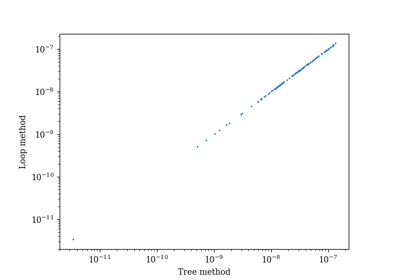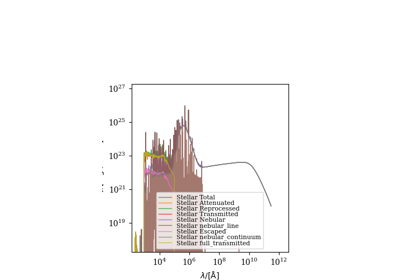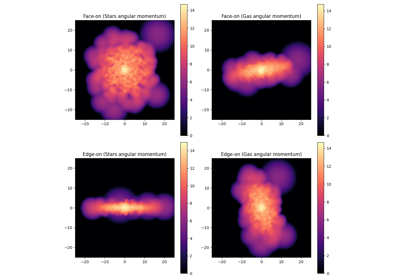synthesizer.kernel_functions¶
A module defining SPH kernels integrated along the line-of-sight.
This module provides a class for calculating SPH kernels integrated along the line-of-sight. The kernels are used in smoothed particle hydrodynamics (SPH) simulations to compute the density of particles in a given volume. The kernels are defined as functions of the distance from the center of the kernel and are integrated along the line-of-sight to obtain the density distribution.
- Available kernels include:
uniform
sph_anarchy
gadget_2
cubic
quintic
- Example usage:
kernel = Kernel(name=”sph_anarchy”, binsize=10000) kernel_data = kernel.get_kernel()
Functions
- synthesizer.kernel_functions.cubic(r)[source]¶
Calculate the cubic kernel.
- Parameters:
r (float) – The distance from the center of the kernel.
- Returns:
The value of the cubic kernel.
- Return type:
float
- synthesizer.kernel_functions.gadget_2(r)[source]¶
Calculate the Gadget-2 kernel.
- Parameters:
r (float) – The distance from the center of the kernel.
- Returns:
The value of the Gadget-2 kernel.
- Return type:
float
- synthesizer.kernel_functions.quintic(r)[source]¶
Calculate the quintic kernel.
- Parameters:
r (float) – The distance from the center of the kernel.
- Returns:
The value of the quintic kernel.
- Return type:
float
- synthesizer.kernel_functions.sph_anarchy(r)[source]¶
Calculate the SPH Anarchy kernel.
- Parameters:
r (float) – The distance from the center of the kernel.
- Returns:
The value of the SPH Anarchy kernel.
- Return type:
float
- synthesizer.kernel_functions.uniform(r)[source]¶
Calculate the uniform kernel.
- Parameters:
r (float) – The distance from the center of the kernel.
- Returns:
The value of the uniform kernel.
- Return type:
float
Classes
- class synthesizer.kernel_functions.Kernel(name='sph_anarchy', binsize=10000)[source]¶
A class describing a SPH kernel integrated along the line-of-sight.
Line of sight distance along a particle, l = 2*sqrt(h^2 + b^2), where h and b are the smoothing length and the impact parameter respectively. This needs to be weighted along with the kernel density function W(r), to calculate the los density. Integrated los density,
D = 2 * integral(W(r)dz) from 0 to sqrt(h^2-b^2),
where r = sqrt(z^2 + b^2), W(r) is in units of h^-3 and is a function of r and h. The parameters are normalized in terms of the smoothing length, helping us to create a look-up table for every impact parameter along the line-of-sight. Hence we substitute x = x/h and b = b/h.
- This implies
D = h^-2 * 2 * integral(W(r) dz) for x = 0 to sqrt(1.-b^2).
The division by h^2 is to be done separately for each particle along the line-of-sight.



